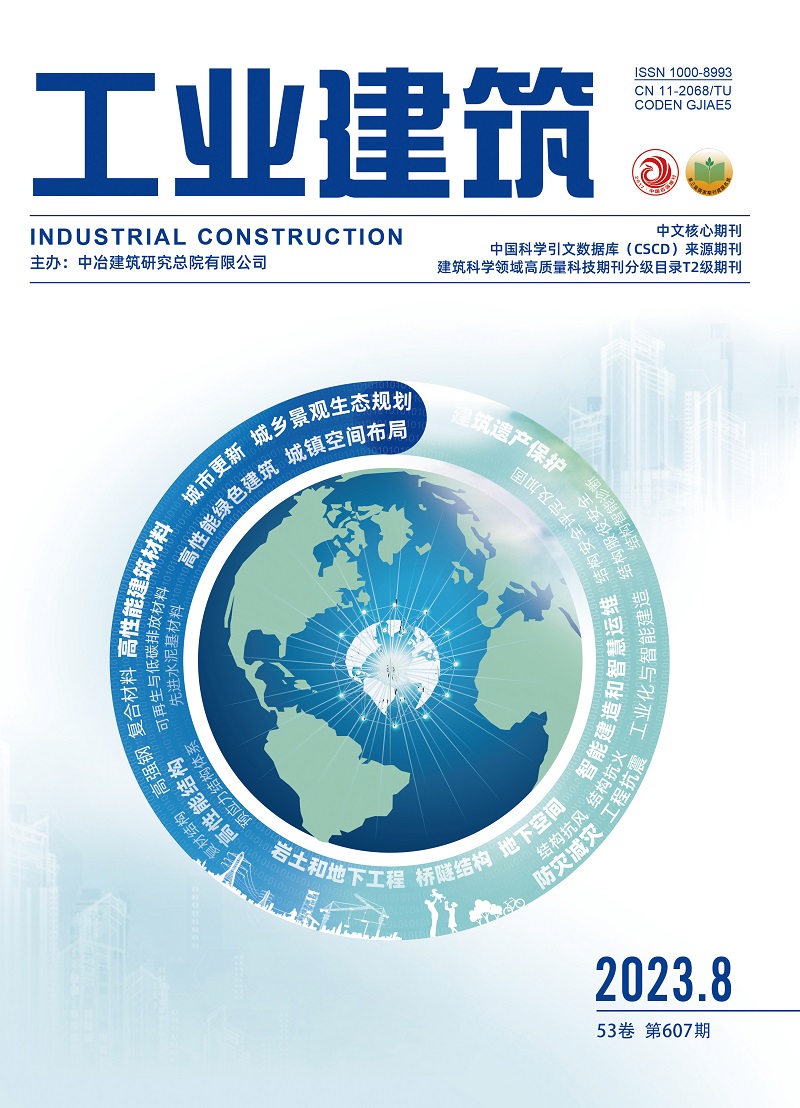| [1] |
高巍,贾梦涵,赵玫,等.街道空间研究进展与量化测度方法综述[J].城市规划,2022,46(3):106-114.
|
| [2] |
周扬,钱才云,魏子雄.居住街区街道空间友好性评价研究:基于居民主观测度视角[J].南方建筑,2022(4):69-77.
|
| [3] |
姜洋,辜培钦,陈宇琳,等.基于GIS的城市街道界面连续性研究:以济南市为例[J].城市交通,2016,14(4):1-7.
|
| [4] |
陈纯,陈婧佳,贾紫牧,等.基于空间失序理论的城市街道空间品质大规模测度:以合肥市二环内为例[J].南方建筑,2020(2):10-18.
|
| [5] |
曲冰,冷嘉伟,马婕.城市商务核心区街道空间形态量化描述与评价方法研究[J].新建筑,2019(6):9-14.
|
| [6] |
陈志敏,黄鎔,黄莹,等.街道空间宜步行性的精细化测度与导控:基于虚拟现实与可穿戴生理传感器的循证分析[J].中国园林, 2022,38(1):70-75.
|
| [7] |
HARVEY C, AULTMAN-HALL L, TROY A, et al. Streetscape skeleton measurement and classi-fication[J]. Environment and Planning B(Urban Analytics and City Science), 2017, 44(4):668-692.
|
| [8] |
培根.城市设计[M].修订版.黄富厢,朱琪,译.北京:中国建筑工业出版社,2003.
|
| [9] |
JACOBS J. The death and life of the great american cities[M]. London:Jonathan Cape,1992.
|
| [10] |
TUAN Y F. Space and place:the perspective of experience[M]. Minneapolis:University of Minnesota Press, 1977.
|
| [11] |
林奇.城市意象[M]. 方益萍,何晓军,译.北京:华夏出版社,2001.
|
| [12] |
INGOLD T. Culture on the ground:the world perceived through the feet[J]. Journal of Material Culture, 2004, 9(3):315-340.
|
| [13] |
RENDELL J. Art and architecture:a place between[M]. London:IB Tauris, 2006.
|
| [14] |
WUNDERLICH F M. Walking and rhythmicity:sensing urban space[J]. Journal of Urban Design, 2008, 13(1):125-139.
|
| [15] |
MELS T. Reanimating places:a geography of rhythms[M]. London:Routledge, 2016.
|
| [16] |
韩默, 庄惟敏.空间组构与空间认知[J].世界建筑,2018(3):104-107,122.
|
| [17] |
苑思楠,张寒,何蓓洁,等.基于VR实验的传统村落空间视认知行为研究:以闽北下梅和城村为例[J].新建筑,2019(6):36-40.
|
| [18] |
RUDDLE R A, LESSELS S. For efficient navigational search, humans require full physical movement, but not a rich visual scene[J]. Psychological Science, 2006, 17(6):460-465.
|
| [19] |
ZACHARIAS J. Exploratory spatial behavior in real and virtual environments[J]. Landscape and Urban Planning,2006,78(1):1-13.
|
| [20] |
苑思楠,张玉坤.基于虚拟现实技术的城市街道网络空间认知实验[J].天津大学学报(社会科学版),2012,14(3):228-234.
|
| [21] |
MAHESHWARI T, KUPFERSCHMID J, ERATH A, et al. Virtual reality as a tool to assess perception of safety and comfort for cyclists in Singapore[C]//Proceedings of the Crossroads:Asian Street in the Dynamics of Change, GASS 2016 Great Asian Streets Symposium. 2016:12-13.
|
| [22] |
孙良,李战,冯乐.基于量化分析的地下街道空间适宜尺度研究[J].地下空间与工程学报,2019,15(1):25-31.
|
| [23] |
北京市规划委员会,北京市城市规划设计研究院,北京建筑工程学院.北京旧城胡同实录[M].北京:中国建筑工业出版社,2008.
|
| [24] |
方智果. 基于近人空间尺度适宜性的城市设计研究[D]. 天津:天津大学,2014.
|
| [25] |
王德,张昀.基于语义差别法的上海街道空间感知研究[J].同济大学学报(自然科学版),2011,39(7):1000-1006.
|
| [26] |
韩然屹. 基于知觉体验的城市街道空间演变研究[D]. 大连:大连理工大学,2012.
|
| [27] |
ZHOU B, ZHAO H, PUIG X, et al. Semantic understanding of scenes through the ade20k dataset[J]. International Journal of Computer Vision, 2019, 127(3):302-321.
|
| [28] |
ZHOU B L. Model Zoo[EB/OL].[2022-05-23].https://github.com/CSAILVision/sceneparsing/wiki/Model-Zoo.
|


 Login
Login Register
Register E-alert
E-alert







 DownLoad:
DownLoad: